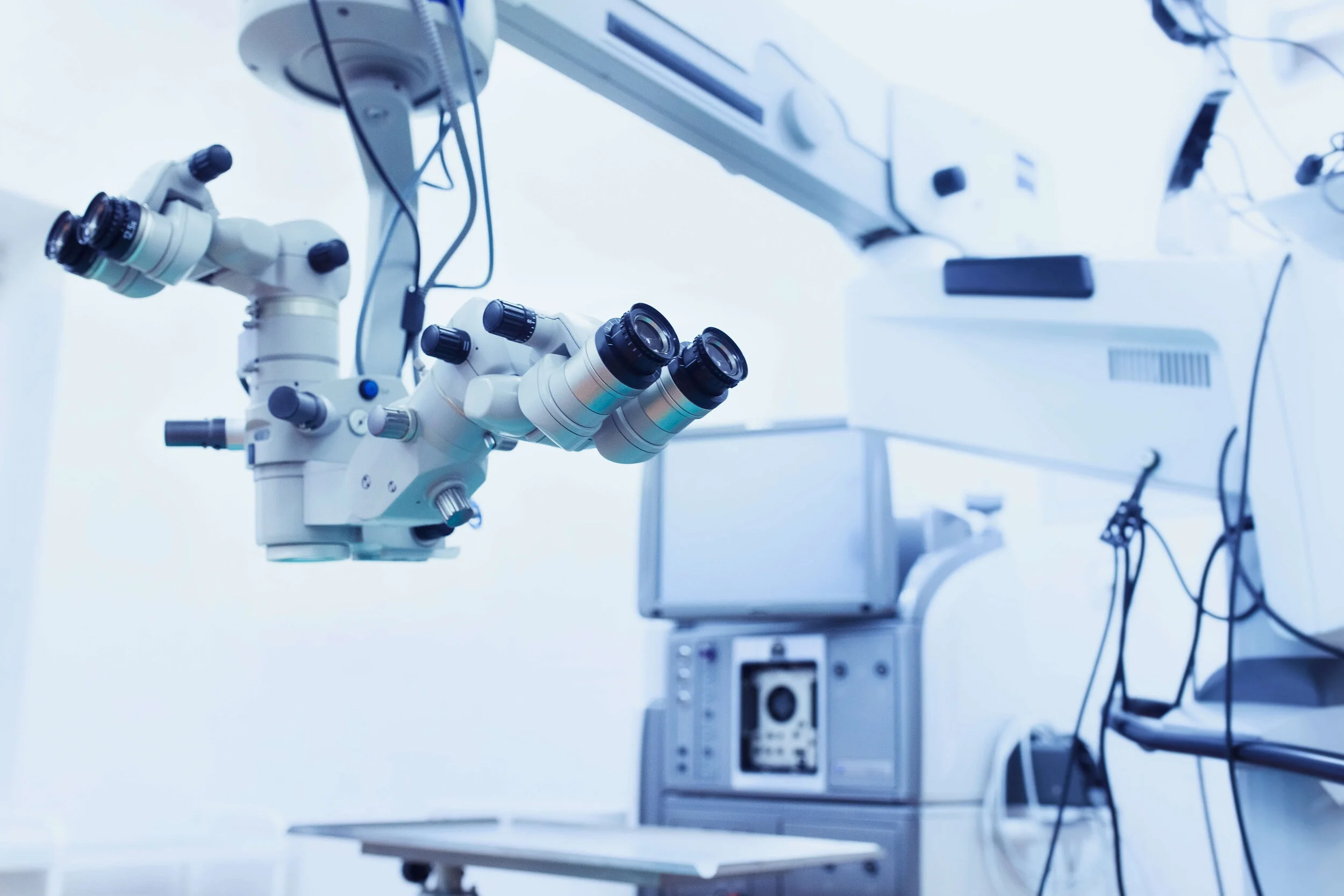Learn more about more about the information to the left by clicking any of the links, or read our frequently asked questions and about new advanced surgical techniques that Dr. Woods performs.
What is nearsightedness?
Nearsightedness or Myopia occurs when light rays entering the eye are focused in front of the retina instead of directly on it. This is due to the eye being too long or the cornea having a curvature that is too steep. For people with myopia, distant objects appear blurry.
What is farsightedness?
Farsightedness or Hyperopia occurs when light rays entering the eye are focused behind the retina instead of directly on it. This is due to the eye being too short or the cornea having a curvature that is too flat. Patients with farsightedness typically have difficulty with close vision and often distance vision too..
What is astigmatism?
Astigmatism occurs when the curvature of the cornea, and/or the lens is shaped like a football, rather than spherically shaped like a baseball. This makes it difficult to focus clearly on an object or letters, thereby compromising distance and close vision.
What is presbyopia?
Presbyopia is the need for reading glasses that typically occurs between the ages of 40-45. This vision problem is the result of the lens inside the eye losing its elasticity and ability to change shape and focus on near objects. Some patients are able to correct this problem by taking their glasses off or by wearing over-the-counter reading glasses. Other patients need or choose to wear bifocals for both distant and near correction.
What is a cataract?
A cataract is a clouding of the natural lens inside the eye. Most of the time this clouding progresses slowly and is due to the natural aging process of the eye. Patients will experience gradual blurring or dimming, sometimes described as a "haze" or "film" over their vision. As the cataract progresses, the vision usually decreases. This decrease in vision can make everyday tasks such as reading or driving difficult (glare increases which also contributes to night driving problems). Please let Dr. Woods' staff know if you are experiencing these problems.
When do cataracts need to be treated?
Cataracts usually develop very gradually and can take months or even years to affect the vision. Cataract treatment may be performed when a cataract is affecting your quality of day-to-day life. Dr. Woods will perform a thorough eye exam to assess if cataract treatment would be beneficial to you.
How does cataract treatment work?
Cataract treatment is done on an outpatient basis. For most patients modern day cataract treatment is a painless procedure with few limitations. The procedure is usually performed under topical anesthesia; this means drops are used to numb the eye. During the cataract treatment the natural "cloudy" lens is removed and an artificial lens called an intraocular lens is placed inside of the eye. There are several varieties (mono-focal, multi-focal and accommodating) of intraocular lenses Dr. Woods uses. Dr. Woods will discuss which lens you are a candidate for, if cataract treatment is needed.
Will I need glasses after cataract treatment?
Most patients will need to wear glasses for reading after they have had cataract treatment. In some patients a new technology can be used that could reduce the dependency on reading glasses after treatment. This new technology uses a multi-focal or accommodating lens implant to help the patient focus on distant and near objects at the same time. This new technology is not fully covered by insurance, so there would be an out-of-pocket expense to you. If you are a candidate for this technology, Dr. Woods and his staff will discuss possible benefits of this option and expenses related to this procedure.

